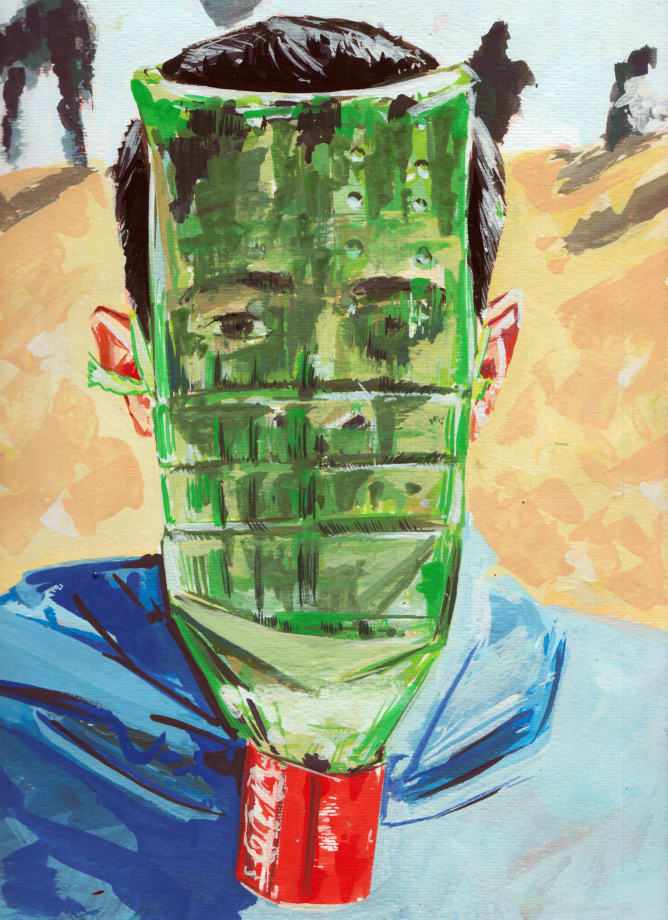In 1968, the trio The Jimi Hendrix Experience published the song "Voodoo Child". One of the main features was Hendrix's extraordinary use of the wah-wah pedal with his guitar, an effect that mixed sounds similar to the human voice. The origin of "Voodoo Child" was another, similar song, "Voodoo Chile", based on "Rollin' Stone" by Muddy Waters. In both Voodoos, Hendrix claimed his origin in the Delta Blues (one of the oldest known styles) and linked it to his destiny. The figure of the Voodoo Child acted as a mediator between the known reality and the magical and unknown. It moved well in the present but was in the future.
The works of Elad Larom that make up Voodoo Child have their origin in eclectic images. The artist has painted clothes and masks, sometimes mixing different cultures, such as western ties with designs from other cultures. Some of the images the artist starts with are recognisable in his works and others are unrecognisable. From an archetypal key image of traditional African masks, to European neckties and homemade gas masks of Palestinian protesters. Traditionally, in a tribe or group that respected and followed the laws of their ancestors, the mask, and the attire that accompanied it in spiritual and religious rites, apart from serving to protect and transform its wearer, also connected their origins to the unknown. Nowadays, in its uses of political character, the mask serves to protect the one who wears it in the vindication of a concrete destiny, common to the group.

